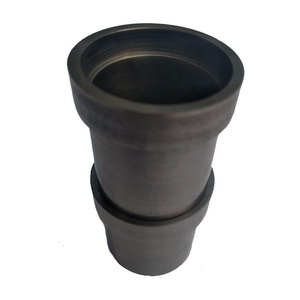Introduction to Assay Crucibles
An assay crucible is an essential tool in metallurgy and material science, specifically designed for the analysis of metals and other materials. These highly durable containers play an integral role in determining the purity of metals through various assay methods, including fire assay. Crucibles are immensely important in laboratories and industrial applications, enabling accurate and efficient chemical reactions, high-temperature testing, and material processing.
Types of Assay Crucibles
Assay crucibles come in various types, each tailored to meet specific needs based on the material and application:
- Clay Graphite Crucibles: Ideal for high-temperature applications, these crucibles are stable and can withstand thermal shock, making them suitable for various metals.
- Silica Crucibles: Known for their high melting points, silica crucibles are excellent for producing accurate assay results, particularly for precious metals.
- Alumina Crucibles: These crucibles offer excellent thermal stability and resistance to chemical attacks, suitable for high-performance laboratories.
- Platinum Crucibles: As one of the most expensive materials, platinum crucibles are used for highly precise assays where metal contamination is a concern.
Applications of Assay Crucibles
Assay crucibles have a wide variety of applications across different industries, ensuring consistent quality and reliable results:
- Metallurgical Testing: Used to determine the composition and purity of metals through methods like fire assay, where the sample is melted in the crucible.
- Laboratory Experiments: Crucibles facilitate chemical reactions at high temperatures, contributing to research and development in material science.
- Mining Industry: Used in the analysis of ore samples to assess the presence of valuable metals, enabling effective resource management.
- Ceramics and Glassmaking: Crucibles are used to melt raw materials and test the properties of ceramic and glass products throughout the production process.
Advantages of Using Assay Crucibles
The use of assay crucibles offers a multitude of benefits, making them an indispensable tool in various analytical procedures:
- High Durability: Made from robust materials, assay crucibles can withstand extreme temperatures and chemical reactions without deforming or breaking.
- Accurate Results: Their design allows for controlled experiments, ensuring reliable readings of metal content and other material properties.
- Versatility: Assay crucibles are suitable for a wide range of applications, from precious metal testing to laboratory experiments in different scientific fields.
- Easy to Clean: Most assay crucibles are designed for easy maintenance, allowing them to be reused multiple times without impacting accuracy.



































































































































































